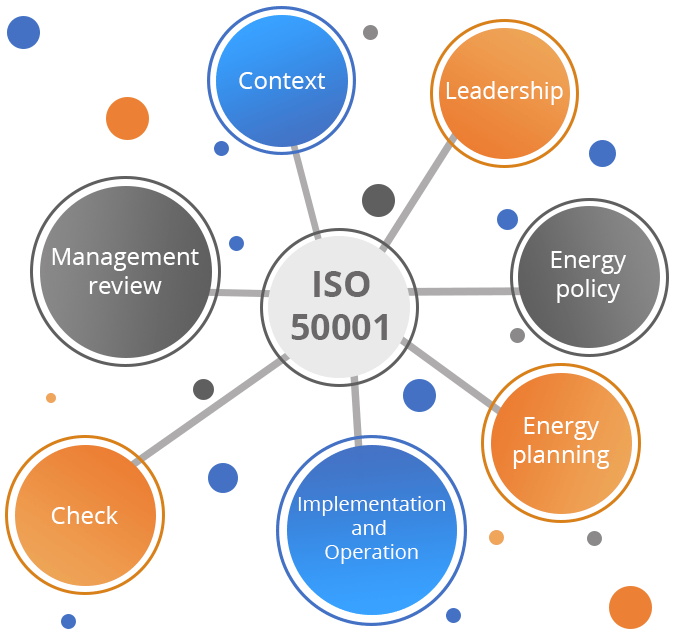Latin America and the Caribbean Energy Management Systems Observatory
The Energy Management Systems (EMS) are a set of methodologically interrelated elements in an organization to achieve sustained and continuous energy performance improvement and additional benefits related to the reduction of greenhouse gas emissions and energy costs, so they are an important element for the fulfillment of energy and climate change goals.

Do you want to know how your organization ranks related to the ISO 50001 best practices for the implementation of an SGE?
The ISO 50001 is an international standard that aims easy for all types of organizations to establish the systems and processes necessary to improve their energy performance. Its successful implementation depends on the commitment of all levels and functions of an organization.
The implementation of EnMS allows savings in energy consumption. Experiences in the industry have achieved a reduction of between 10 and 40%.
Select the countries you are interested in (ctrl + click for multiple selection)
the potential for energy savings due to the implementation of EnMS in the industry is:
0Million tonnes of oil equivalent per year
Represent the 0%of the Energy Total Final Consumption
Here you can find more information about promotion programs and success stories in LAC, as well as material related to EnMS, click on the following buttons
Promotion programs
Success stories
Reference material
Latin America and the Caribbean Energy Management Observatory (OSGELAC)
SELF-ANALYSIS 50001
The following questionnaire allows you to know the areas that an EnMS addresses to improve energy management and energy performance of an organization. At the end, you will get a report of the gap analysis of the main areas with opportunity for improvement.
The questionnaire is based on the best practices of EnMS and the requirements established by the ISO 50001 standard. There are 53 questions that you can answer yes, no or partially.
For a better understanding, the questionnaire is separated into 13 sections. You will be able to move forward once you complete all questions of each section.
Results
Analysis by categories: Below is an identification of the positioning of your organization in each of the analyzed categories


